In the past few years, Remington Arms has gotten a bad rap in the shooting community for putting out low-quality firearms. Originally, Remington was founded in 1816. After a long and storied history, Remington filed for bankruptcy, and in 2020, Remington was bought by the Roundhill Group, LLC. The main scope of this article is to see if they’ve turned things around under the new management and what kind of quality their current products offer.
870 Reliability
Throughout my law enforcement career, the issued shotguns that I used were always Remington 870s. My agency beat the hell out of those shotguns. My duty station had approximately 750 officers, and each had to be qualified annually. In addition to that, we also had an Emergency Response Team (CERT) that also used the 870.

In all my years, I saw very few 870s break down. In fact, I could count on one hand the number of breakages I’ve seen, and I’d still have fingers left over. Given the number of rounds that we ran through those shotguns, that is nothing short of astonishing.
I personally put tens of thousands of rounds through them over the years, and they always functioned very well with minimal maintenance. And by “minimal”, what I mean to say is, they were utterly neglected. Most received no cleaning or lube before they saw many thousands of rounds down range, especially at annual qualification time.
But that was then, and this is now.
Today’s 870 Tactical
A friend recently purchased an 870 Tactical pump action shotgun in 12-gauge. Being brand new, I was curious to see how the new model performed. More specifically, I wanted to see if the quality is what I’d expect from the old Remington, which was always quite good.

My friend put this particular 870 through a few range sessions before he and I met to put it through its paces. It already had some rounds through it by the time I was able to try it out, which gives us a pretty fair idea of how it is going to pan out for the long haul.
The 870 we fired is all black with synthetic furniture. The magazine is of the extended variety, holding six rounds. At the end of the mag tube is a mount for a sling swivel. At the bottom of the stock near the butt is another mount for a sling swivel.
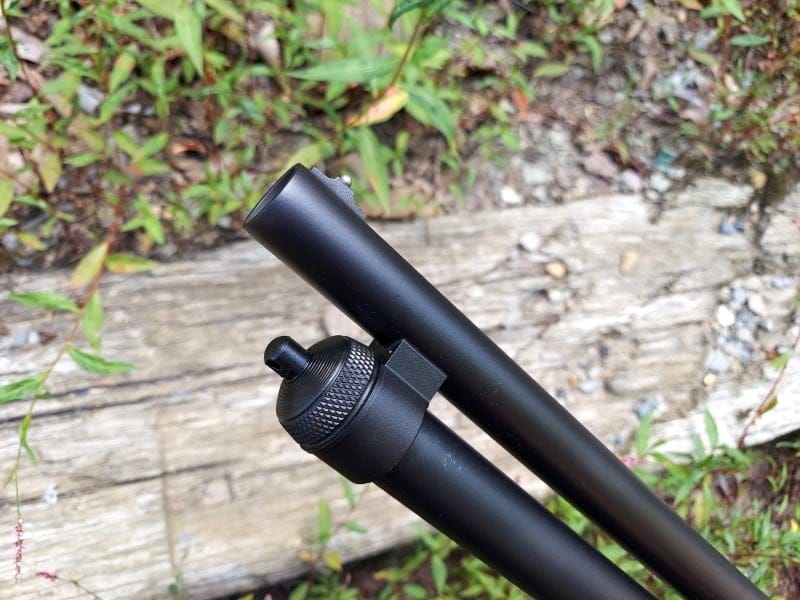
Remington’s 870 tactical sports the shortest barrel allowed by law, which is 18 inches.
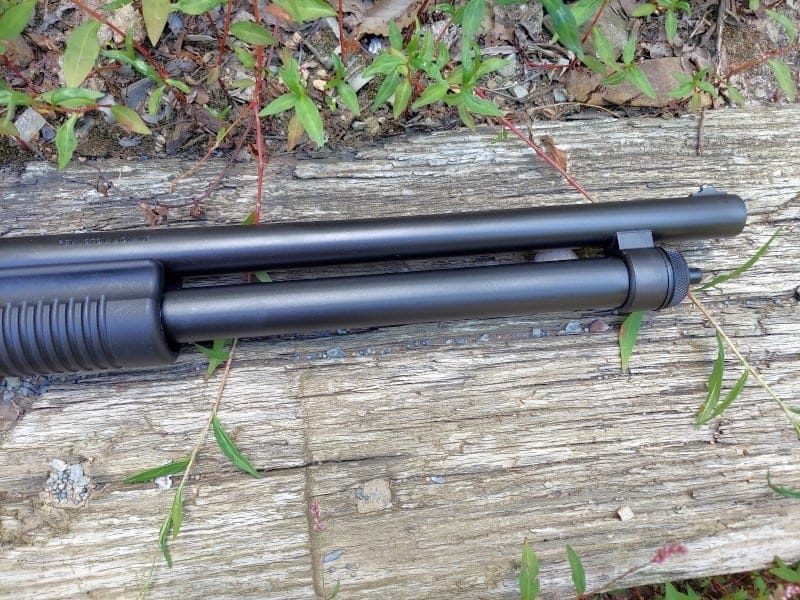
The slide release is just in front of the trigger guard. Typically, the shotgun is stored in what we refer to as Cruiser Safe, which means the magazine is full and there is no round in the chamber, and the safety is on. This is a good way for many people to store a shotgun. It can quickly be put into action but is relatively safe from accidental discharge.
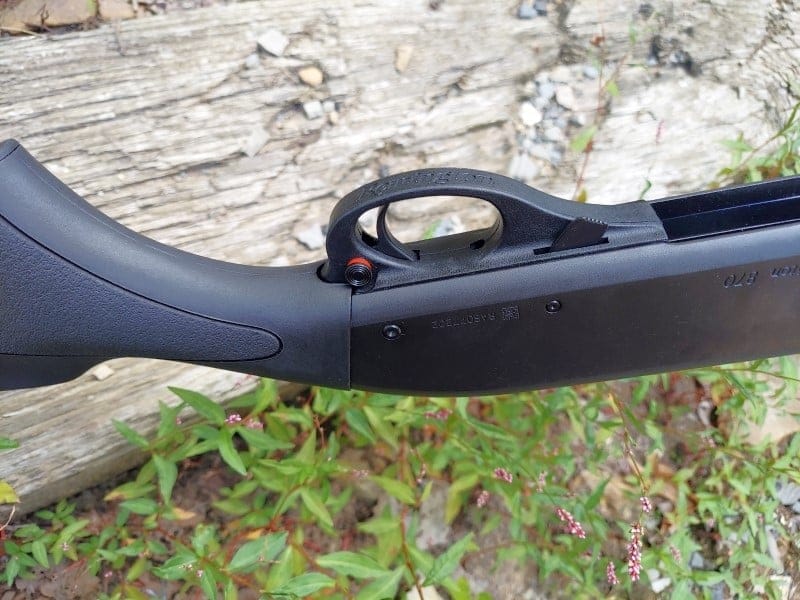
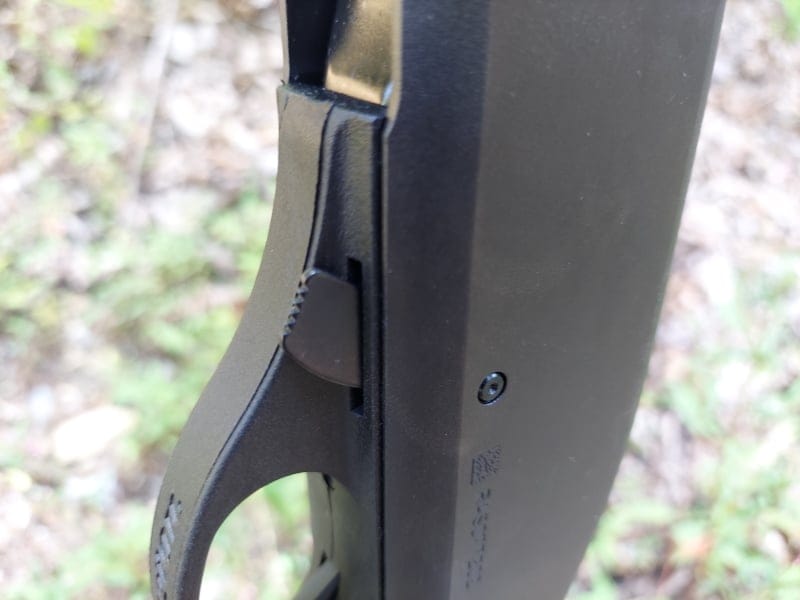
To make it ready to fire from Cruiser Safe, just depress the slide release, rack a round into the chamber by operating the slide, and take off the safety. If the trigger is pressed, it will then fire. Each time the trigger is pulled, the shooter does not have to use the slide release again—the slide will cycle freely.
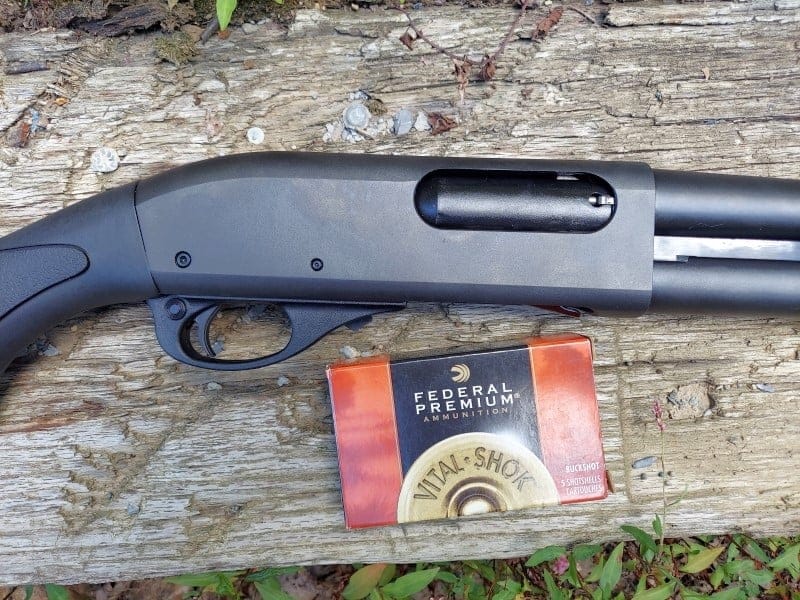
The magazine follower is fluorescent orange and very easy to see. It really helps to be able to see whether there’s a round in the magazine or not with that bright color. Speaking of the tubular magazine, as mentioned, this one holds six rounds, and of course, another round can fit into the chamber, for a total capacity of seven rounds.
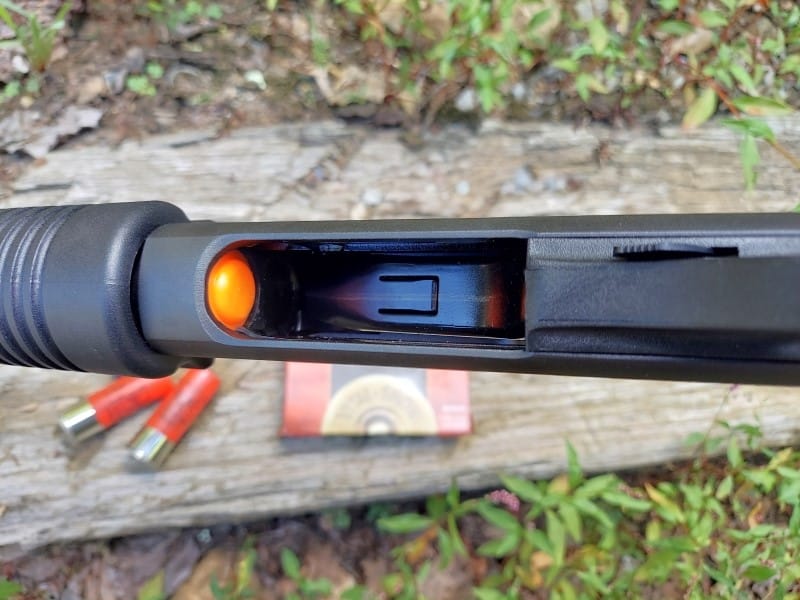
Shooting Buckshot
Eight rounds of OO buckshot from a 12-gauge is quite a payload of destruction and mayhem, as our target shows. Each round of OO buckshot typically contains nine .32 caliber pellets. I’m not good at mathematics, but that equates to 63 projectiles that this shotgun can put out (assuming OO buckshot is used) in a few seconds. Needless to say, that is a lot of goblin repellent.
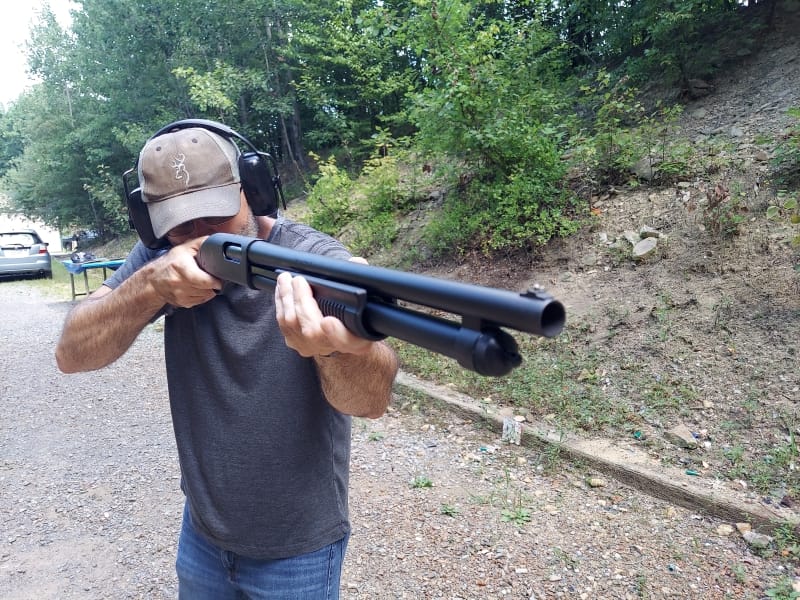
The first round we fired at the target was at seven yards. I wanted to see how the shotgun patterned at that range, and the results were exactly as expected—a group of about six or so inches. Once again, this dispels the old myth that we hear so often: “You don’t have to aim a shotgun, just point it in the direction of the target and you can’t miss.”

That is so much complete poppycock! The problem is that people believe such nonsense and plan accordingly. At home defense distances, that plan of action simply will not work. The gun must be aimed. Period. But if you do your part, the shotgun will most assuredly fill its end of the bargain. All you have to do is use it within its parameters.
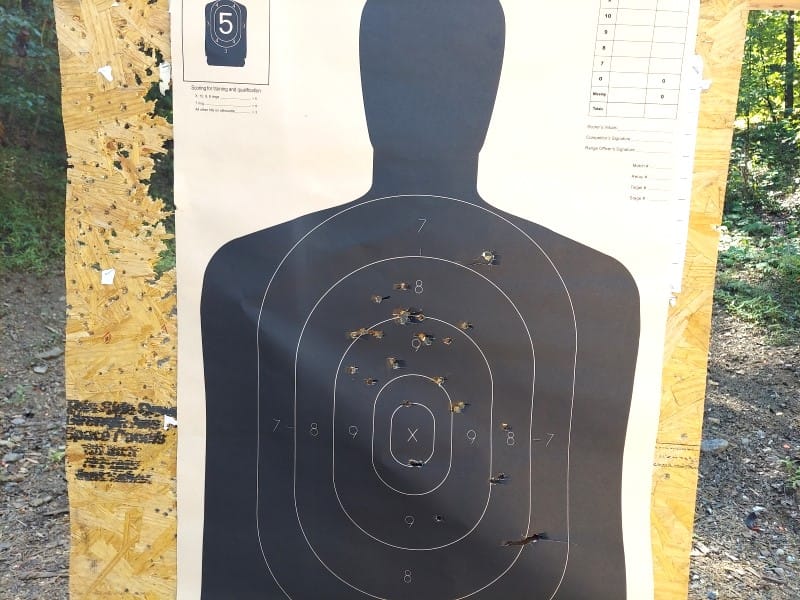
Patterning each particular shotgun is a good idea. Each shotgun may pattern a bit differently. Do you know how far out your shotgun will keep all pellets inside a human target? No? Get to the range then and see.
But wait, there’s more! Each brand of ammo is going to pattern a bit differently. It might take a little work to find a good brand of ammo for your shotgun, but it will be worth it.
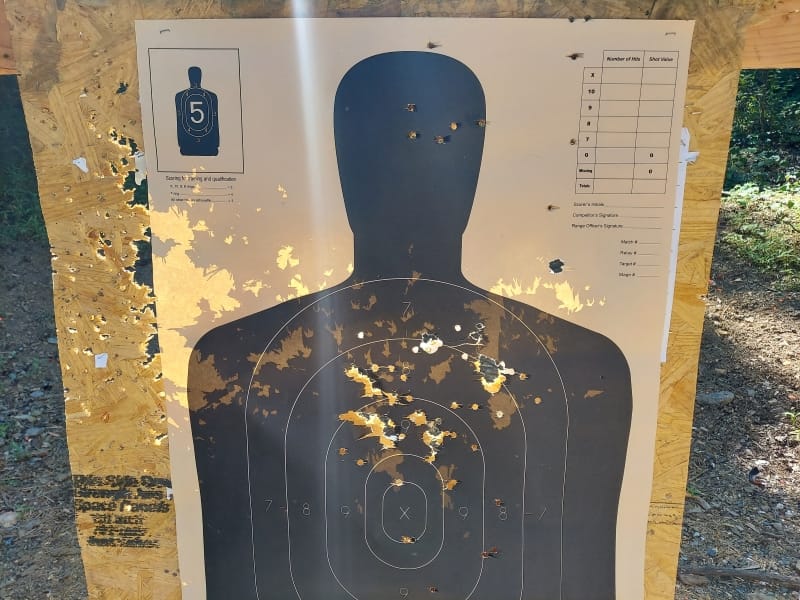
How does the Remington 870 Tactical perform?
Not surprisingly, the 870 performed flawlessly! The action was smooth, and will undoubtedly smooth out more as it’s broken in. Feeding was exemplary, with no hiccups.
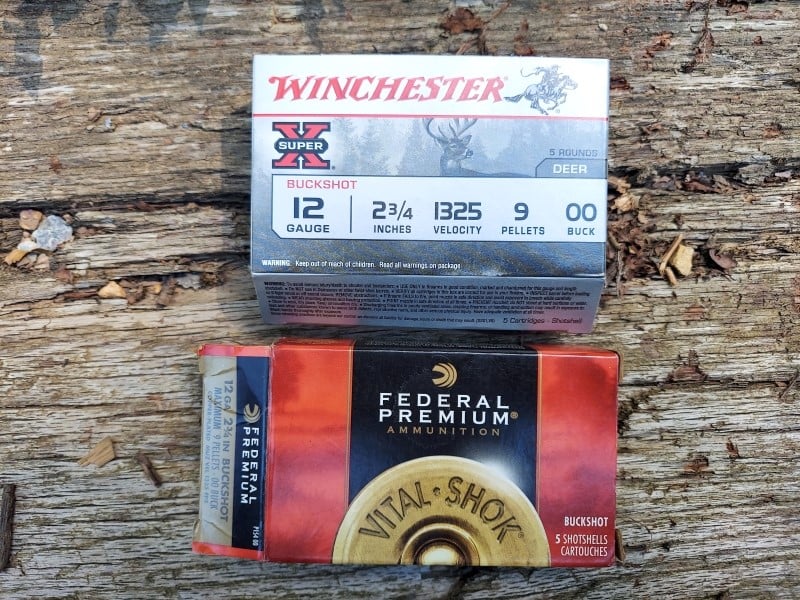
I’d love to elaborate more, but there it is. The thing did just what Remington 870’s have been doing all my career—it worked!
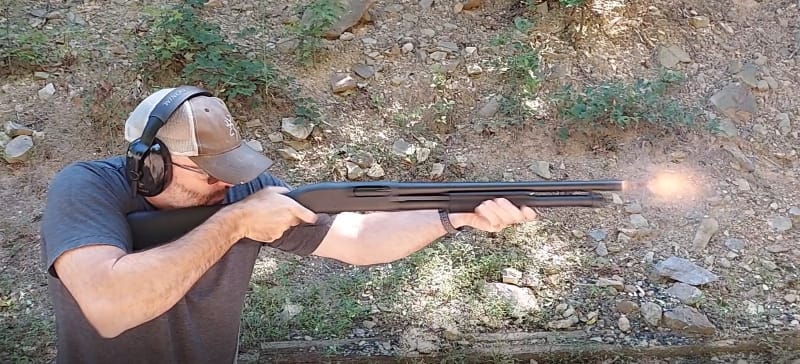

The fit and finish on this shotgun also are very good. Since it’s a tactical model meant to be a working tool, it’s not varnished and polished. To that end, the finish is perfect. I’ll go as far as to say that the tactical black finish looks attractive.

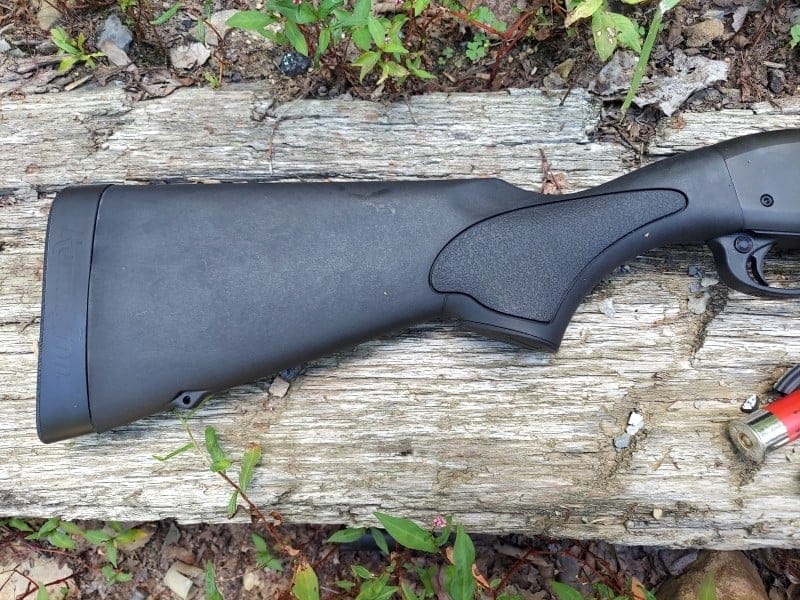
Center Axis Relock Technique With the Remington 870
Most of this article is not reinventing the wheel. However, I do have a technique for home defense that you may not have seen before. It’s particularly useful for home defense ranges. It originates from Paul Castle, who invented the shooting system of Center Axis Relock.
This technique is used for very close ranges, such as inside a home:
- Place the stock over the dominant side shoulder and pull the gun back.
- Grip the gun over the top with the firing hand—the gun is held sideways.
- Look over the barrel and line up on the target—the sights are not used in this technique.
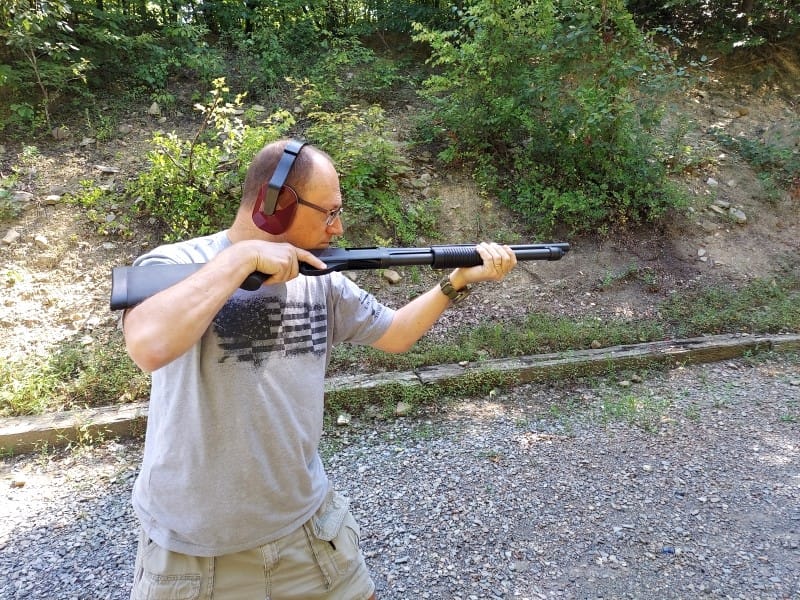
What does this do?
It negates the recoil into the shoulder and allows the arms to act like shock absorbers.
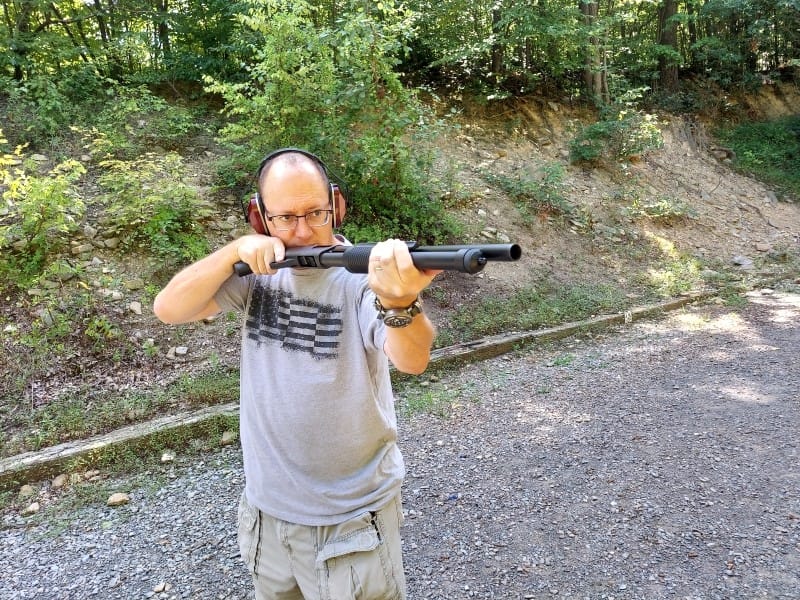
Aside from negating recoil, the barrel is pulled back, making the shotgun act like a much more compact weapon. The barrel can be pulled back far enough that it’s equal to a pistol that is extended at full arms’ length. This aids in weapons retention and is useful for CQB.
The slide can still be racked as per usual (and very quickly) with a little practice.
Final Thoughts on the Remington 870 Tactical
Well, I’ve already told you – the new Remingtons seem to be good to go. Understand, this is only a sample “group” of one. I acknowledge this. That said, I’ve seen it with my own eyes, and I’d buy one. In fact, in the future, I may just go ahead and snap up a new Remington 870. I think you’d be safe doing so as well.


